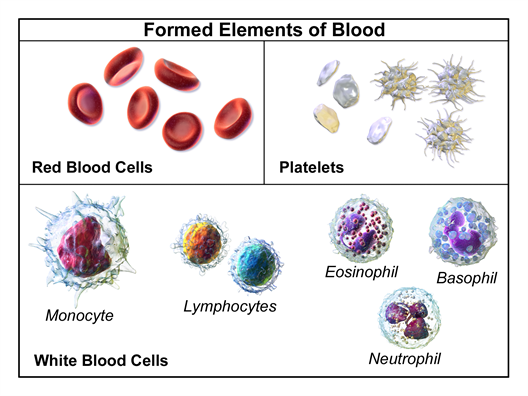PDF chapter test TRY NOW
All organisms require nutrients, water, oxygen, etc., for their survival. Therefore, living things must transport these substances to all parts of the body to function correctly. Unicellular organisms use diffusion and osmosis for the transportation of substances.
In multicellular organisms, a more sophisticated and structured system for the transportation of various substances is required. Similarly, it must eliminate wastes from the body.
In multicellular organisms, the transport of nutrients, oxygen, minerals, salts, and other waste products around the body are performed by the circulatory system. The circulatory and excretory systems together constitute the transportation system. In this chapter, the circulatory system of animals is dealt with in detail.
Circulatory system:
The circulatory system consists of the circulating body fluids - the blood and lymph, the heart and the blood vessels that form the collecting and transporting system. The circulatory system of animals is discussed in depth in this chapter.
Blood:
Blood is an important circulatory medium present in complex multicellular organisms, including the human body. It is a red-coloured fluid connective tissue. Blood has a slightly alkaline pH of 7.4.
Components of Blood:
The blood mainly consists of two components:
- Plasma - Liquid portion of the blood
- Formed elements or blood cells - Solid portion of the blood
Plasma is the liquid or the fluid portion of the blood. The formed elements or the blood cells are suspended in the plasma.
1. Plasma - The liquid portion of the blood:
Plasma is a slightly alkaline, pale yellow, transparent fluid that comprises 90 - 92 \% water. It contains non-cellular substances and makes up to 55 \% of the total volume of the blood.
Organic substances like vitamins, minerals, glucose, protein, urea, enzymes, clotting factors, hormones, amino acids, etc., are present in the plasma. In addition, it transports food, CO_2 and the nitrogenous wastes in the dissolved state.
2. Formed elements or blood cells:
Blood corpuscles constitute about 40 - 45 \% of the blood. They are of three types:
1. Red blood corpuscles (RBCs) or Erythrocytes
2. White blood corpuscles (WBCs) or Leucocytes
3. Blood platelets or Thrombocytes

The components of blood
